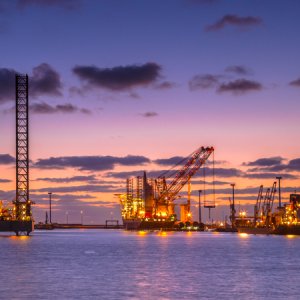PEMEX Joins Helix Well Containment
STORY INLINE POST
In response to the Deepwater Horizon incident, a group of 24 deepwater operating companies came together in order to find a fast and complete containment and response system for dealing with deepwater well blowouts. The result was the creation of the Helix Well Containment Group (HWCG). The members of HWCG are committed to a mutual aid agreement, allowing any member to draw on the expertise, assets and resources of the other members in the event of an incident. On March 6th, Pemex CEO Juan José Suárez Coppel announced to the press that the board of HWCG had granted preliminary approval to Pemex for inclusion in the group.
The group’s well containment system is based on four factors: equipment, people, procedures and processes. The equipment chosen by the group is largely based on the technology that eventually stopped the oil flowing at Macondo, which was provided by Helix Energy Solutions Group. A 15,000 psig intervention capping stick was developed by Trendsetter Engineering for use by the group, and more than 35 service providers will be on hand to supply additional services and products should the need arise, thanks to various supply agreements in place.
The processes and procedures the group has put in place to deal with a spill similar to the Deepwater Horizon incident are based on the idea of mutual aid. The group has put together a plan for well containment, with guidance from the US Bureau of Ocean Energy Management, Regulation and Enforcement (BOEMRE) and the group’s own technical committee. The plan identifies response protocols for foreseeable deepwater containment scenarios. Any event involving a group member will be contained from the Petro Skills Training Centre in Katy, Texas, the location chosen to become the joint command centre should any well containment event occur. The group will also be conducting training exercises and emergency drills in order to prepare to use the containment plan, and to improve the capabilities and knowledge of the well containment team. There will also be an annual two day table-top exercise involving all members and service providers.
The ‘people’ aspect of the group’s abilities will stem from the member companies involved in the team. The group’s founding companies include many operators from the US Gulf of Mexico, and companies with years of experience and involvement in deepwater operations. They include Anardarko, Apache, BHP Billiton, ENI, Hess, Marathon, Nexen, Repsol, Statoil, and Woodside Energy. The group represents 80% of the deepwater operators and half of all deepwater production in the US Gulf of Mexico.
The group felt confident enough to announce in June 2011 that it can now effectively contain spills in water depths of up to 3,048m with its 15,000 psig full opening dual ram intervention capping stick, which HWCG calls the most advanced capping stick in existence today. Using this technology, the group says it is able to capture and process up to 55,000 bbl/day, and 95 Mcf of natural gas, with a surface operating pressure of up to 10,000 psig. Previously, HWCG had claimed it could deal with a blowout in water depths of up to 2,438m.
If Pemex is accepted as a full member of HWCG, it will allay fears, expressed recently by CNH President Juan Carlos Zepeda Molina, that neither the regulator nor the NOC were fully prepared for a disaster in deepwater and ultra- deepwater. Pemex is planning to drill six deepwater wells in 2012, but the deepest of these is at a water depth of 2,933m, within the capabilities of HWCG. However, Pemex is not only pinning its hopes on the Helix Well Containment Group: at the same time as announcing that the NOC had applied for membership, Suárez Coppel also told reporters that the company was in talks with several companies, including Cameron and Wild Well Control to develop its own well containment system.
Helix Well Containment Group is also not the only company looking to find a permanent and trustworthy solution to well containment failures. The Marine Well Containment Company is a non-profit organization dedicated to exactly the same purpose. The MWCC was founded by ExxonMobil, Chevron, ConocoPhillips and Shell In July 2010. In February, the group announced that it had created an interim containment system for use in the US Gulf of Mexico, with their completed billion-dollar containment system ready to be introduced at some point in 2012. In the event of an incident, the MWCC is capable of providing subsea equipment including risers, dispersant and hydraulic manifolds to the responsible company, as well as the capping stack. The company involved would be responsible for debris removal, relief well drilling and deploying and operating the equipment supplied, as well as securing marine capture vessels, shuttle tankers and surface cleanup. The completed final system will also include dedicated modular capsule vessels.
Despite the preliminary approval of Pemex’s membership of the Helix Well Containment Group, industry regulator National Hydrocarbons Commission (CNH) not yet agrees that Pemex is prepared for the challenges of drilling deep-water wells at depths exceeding 1,500m. Only full membership of a well-containment group will be sufficient to meet the CNH’s compliance standards.



















